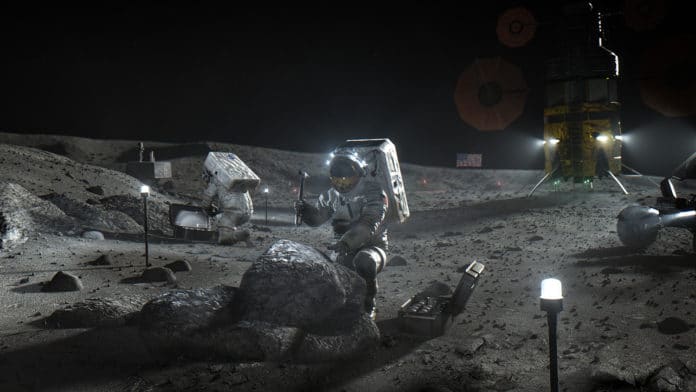NASA has awarded a contract of $967 million to three American companies to design and develop human landing systems (HLS) for the agency’s Artemis program. NASA chooses Jeff Bezos’ Blue Origin, Elon Musk’s SpaceX, and Dynetics to develop moon landers until February 2021.
“With these contract awards, America is moving forward with the final step needed to land astronauts on the Moon by 2024, including the incredible moment when we will see the first woman set foot on the lunar surface,” said NASA Administrator Jim Bridenstine. “This is the first time since the Apollo era that NASA has direct funding for a human landing system, and now we have companies on contract to do the work for the Artemis program.”
Jeff Bezos’ Blue Origin joins the project as the leader of a consortium called the “National Team”. Its members are the space-companies Lockheed Martin, Northrop Grumman, and Draper. Together they are developing the Integrated Lander Vehicle (ILV) – a three-stage lander to be launched on its own New Glenn Rocket System and ULA Vulcan launch system.
Dynetics is working on Dynetics Human Landing System (DHLS) – a single structure providing the ascent and descent capabilities that will launch on the ULA Vulcan launch system. And of course, there is no need to introduce the third company: SpaceX, whose design is a Starship, a fully integrated lander that will use the SpaceX Super Heavy rocket.
This crewed lander system is at the heart of the Artemis mission, the American return to the moon program, one of which will land the first woman and next man on the surface of the Moon by 2024. Despite the coronavirus pandemic, which halted construction and testing of the Artemis rocket and spacecraft, Jim Bridenstine said he wanted to see the mission go ahead.
In February next year, NASA will evaluate which of the contractors will perform initial demonstration missions.
“I am confident in NASA’s partnership with these companies to help achieve the Artemis mission and develop the human landing system returning us to the Moon,” said Lisa Watson-Morgan, HLS program manager at NASA’s Marshall Space Flight Center in Huntsville, Alabama. “We have a history of proven lunar technical expertise and capabilities at Marshall and across NASA that will pave the way for our efforts to quickly and safely land humans on the Moon in 2024.“
